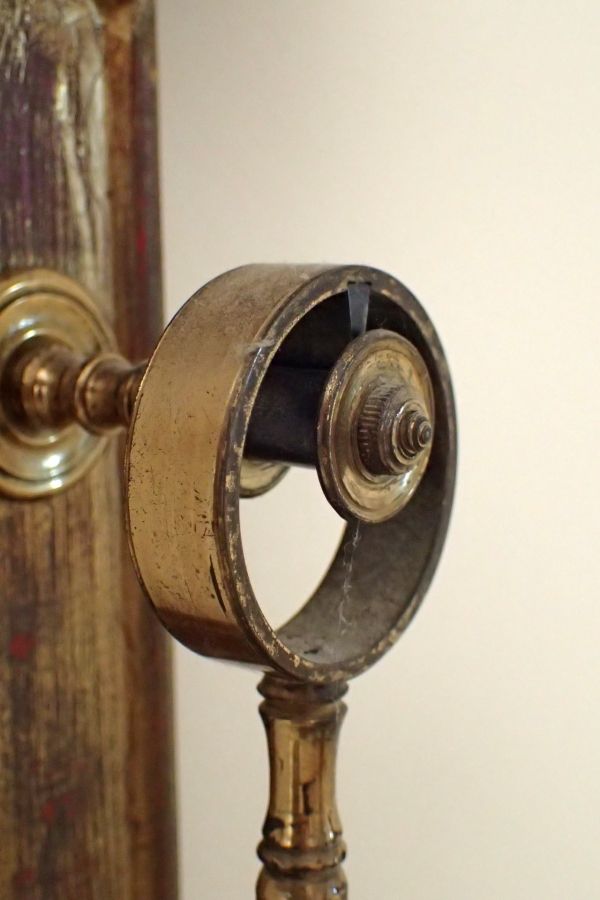Posted by SillyOldDuffer on 03/02/2023 11:29:29:
Posted by S K on 02/02/2023 13:23:23:
Posted by Hopper on 02/02/2023 10:57:46:
I wonder if using something like hardened and ground round bar such as linear slide rails, would be more durable yet still minimal friction? Or is the knife edge essential for the latter point.
Yes, the knife edge is essential, but for a different reason: A round pivot would result in the hinge of the pendulum rocking back and forth too, disturbing its performance. Of course, even sharp knife edges have a non-zero radius, and changing knives could result in changes in performance as well.
…
Which is why I think pendulums avoid hinges of any type
A round pivot causes friction proportional to the bearing area, and making and maintaining an ultra-low friction bearing isn't for the faint hearted, especially when the bearing supports a heavy weight. Surfaces have to be highly polished, low viscosity oil kept in place, and dirt kept out. Plain bearings are unsuitable because they have high starting stiction. Roller bearings reduce stiction, but aren't as smooth running. Jewelled bearings are a possibility, but they tend to be tiny. Air cushion bearings need a pump. Rotating lighthouse lamps were floated in a large tank of Mercury, but the geometry is wrong for supporting a pendulum.
A sharp edge is low friction, but the enormous pressure on the edge tends to cause it to cut into the bearing and to go blunt. Bearing and edge both have to be as hard as possible, but wear is inevitable. Friction rises as the edge cuts and blunts, so performance inevitably falls. How long depends on bob weight and materials, but I guess a well-made clock would run for a few years. The effect of increasing friction could be partly compensated, but I think the pendulum's period would gradually become noisier, eventually forcing the owner to fit a new bearing.
Spring suspensions mostly dodge friction by eliminating metal on metal contact. Instead of grinding on a bearing, a suspension spring stores energy by bending, and returns most of it to the pendulum on the backstroke. (Anyone have any figures for frictional losses in springs? I believe in a thin pendulum suspension spring, the losses are less than those due to the bob stirring air.)
Just a thought, but today's super-magnets might be a good alternative. As well as being more powerful than traditional types, they retain magnetism extremely well. Might be good enough to make a low-friction pendulum bearing. Anyone tried?
Dave
Edited By SillyOldDuffer on 03/02/2023 11:33:36
Oh dear, not paying attention in physics class? Friction is independent of area, it is just the force between the surfaces * the coeff of friction. The reason small diameter axles are easier to turn is as follows. Imagine a wheel on and axle diameter d with a coeff of friction u and a force F applied to the wheel. The friction force on the axle is F*u, so the work done in rotating the wheel through one rev is
the circumference of the axle * F * u = pi*d * F * u. clearly this is smaller for smaller values of d, so the friction loss is smaller.
If a knife edge pivot is actually sliding rather than rocking, then a sharp edge is as small an effective diameter as you can get. One disadvantage of having a knife edge bearing down on a vee slot is that the vee gets full of dust and any wear debris just sits there. A way to avoid this is to have the knife edge facing up and the vee facing down. Bit more difficult to construct.
Now to spring suspension, bending a spring to and fro absorbs energy due to mechanical hysteresis. In the extreme IC engine valve springs can get hot from it, but these are a fairly extreme case. The aim should be for the spring to be very thin, to reduce bending stresses, and made from hard material. Mine is made from something I couldn't drill, had to make a punch. The best clocks, Scott, Fedchenko, Reifler use spring suspension. This appears to be a case of simplest is also best.
Edited By duncan webster on 03/02/2023 14:34:11
S K.






